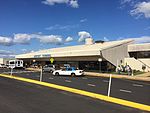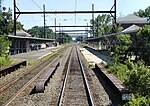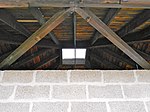Inland Fisher Guide Plant (New Jersey)
The Inland Fisher Guide Plant was a General Motors facility located in the West Trenton section of Ewing Township, New Jersey, that opened in 1938 as one of its most modern plants and was operated by the firm for 60 years. The facility was initially part of the Ternstedt division of GM's Fisher Body unit and was used to construct auto parts such as body moldings, door handles and other interior components. During World War II, the facility was converted to build torpedo bombers for the United States Navy as part of GM's Eastern Aircraft. In 1961, the plant was the site of the first industrial robot used in the United States. At the time of its closure in 1998, the plant made auto components for Delphi Automotive. The buildings on the site were demolished. By 2011 funding had been received by Ewing Township from the federal government to remediate contamination on the site in anticipation of plans to redevelop the area for commercial purposes.
Excerpt from the Wikipedia article Inland Fisher Guide Plant (New Jersey) (License: CC BY-SA 3.0, Authors).Inland Fisher Guide Plant (New Jersey)
Geographical coordinates (GPS) Address Nearby Places Show on map
Geographical coordinates (GPS)
| Latitude | Longitude |
|---|---|
| N 40.2647 ° | E -74.8095 ° |
Address
08628
New Jersey, United States
Open on Google Maps







